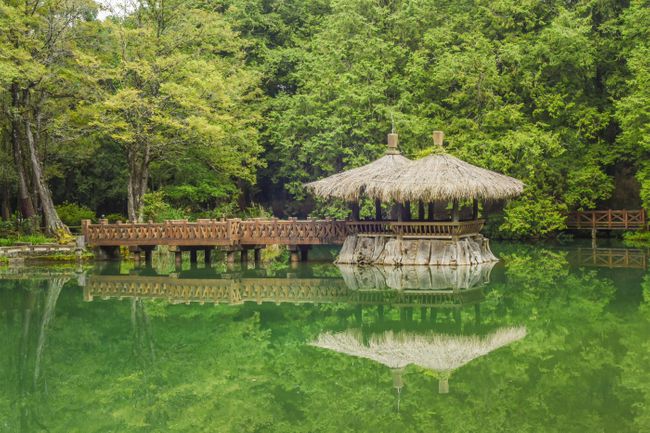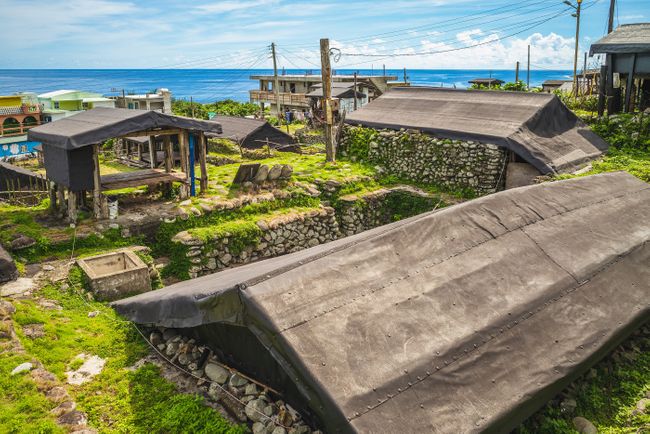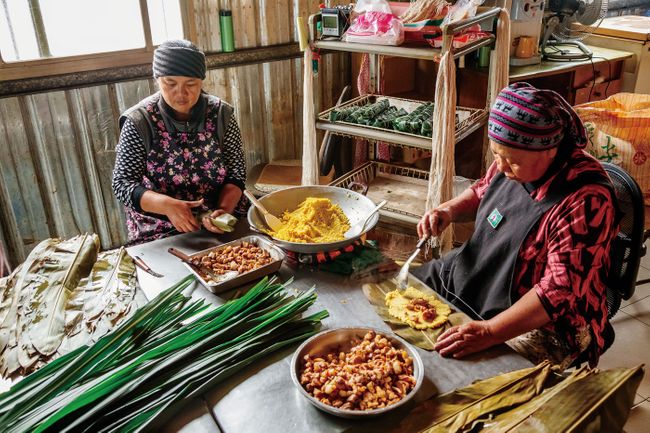13 August 2023
6 ways to see Taiwan through indigenous eyes
Taiwan’s rich indigenous culture is the country’s ancient heartbeat and now there are more ways than ever for you to embrace its indigenous heritage…
Taiwan’s rich indigenous culture is the country’s ancient heartbeat and now there are more ways than ever for you to embrace its indigenous heritage…

The Taiwanese indigenous population, whose ancestors are great seafarers, and believed to be among the first Austronesians sharing genetic and linguistic similarities as the native tribes from the Philippines to as far as the islands of Polynesia. With 16 officially recognized indigenous tribes, Taiwan’s Aboriginal culture and traditions are colourful and diverse, filled with dances, songs and cuisines. There are plenty of ways travellers can experience the Taiwanese indigenous culture on your next trip to this island nation.

Sister Pond in Alishan National Scenic Area (Shutterstock)
Alishan National Scenic Area, part of Taiwan’s central mountain ranges, is famous for its cherry blossoms in spring and great hiking trails throughout the year. It is also homeland to the Tsou (Cou), one of Taiwan’s most intriguing native tribes, and there are many ways to soak up this indigenous culture in Alishan.
The Danaiku (Tanayiku) Nature Ecological Park was established by the tribe around their main traditional hunting and fishing grounds, to preserve the culture and wildlife species that thrive in this environment. This is a great place to taste the cuisine of the Tsou and to enjoy musical performances unique to the Tsou culture.
Visit Dabang, the largest of all Tsou villages. The village has a Nature and Culture Centre, where the chief of the village runs guided tours for visitors. On weekends, swing by the Chukou Visitor Center and browse the indigenous Tokeoasu indigenous market, to pick up some great indigenous snacks and drinks and Tsou handicrafts.

Enjoy a remote homestay experience on the island of Lanyu (Shutterstock)
Visitors to Taiwan can truly immerse in the aboriginal lifestyle and culture by staying in a homestay run by indigenous tribes where visitors can participate in activities such as weaving, cooking, and farming.
Dotted throughout Taiwan’s indigenous settlements are several homestay experiences, mostly along the east coast where the Aboriginal population are the most condensed, in particular Alishan with the Tsou tribe, where you can learn how to shoot with a bow and arrow like the tribal hunters. In the far south close to the hot spring resort areas of Taitung county are guesthouses run by Paiwan and Rukai tribes, known for their expert weaving skills.
And perhaps the most remote of the aboriginal homestay experience would be on the small island of Lanyu, where the Yami (Tao) people have a strong seafaring heritage and are well known for their decorative wooden boats, interesting cuisine and the Flying Fish Festival.

Festivals are a great way to soak up Taiwanese indigenous culture (Taiwan Tourism Bureau)
What was once revelries of tribal victories, pageant worship and to give thanks for a year’s great harvest are now some of the most exciting festivals on the Taiwanese indigenous calendar. Visitors to the festivals will enjoy not only the most authentic atmosphere of celebration, joining in an indigenous festival is also a great way to learn the stories behind the ancient traditions and cultures of the Aboriginal people of Taiwan.
Some of the larger festivals are the Amis Harvest Festival (Ilisin) in July or the Paiwan Millet Harvest Thanksgiving Ritual (Masalut). While festivals in smaller tribes do not allow spectators, many have given permission for tourists to take part. Some of the more interesting festivals to look out for are the Mayasvi Ceremony of the Tsou tribe in Alishan, Ear-shooting Festival of Bunun tribe and the Flying Fish Festival of the Yami people on Lanyu Island. Visitors are welcome to observe, but are reminded that festivals are sacred to the tribal traditions and must appear respectful and adhere to any instructions from the tribes.

Sun Moon Lake is home to the Thao people (Taiwan Tourism Bureau)
Taiwan’s largest lake, Sun Moon Lake, is home to the long established Formosan Aboriginal Culture Village. Established in 1985, it is predominantly an amusement park, although embedded among the rides is an Aboriginal Cultural Museum with an open-air museum of architecture from ten represented Indigenous tribes, offering performances and lifestyle demonstrations. However, to specifically get to know the Thao people, the original inhabitants of the Sun Moon Lake area in Central Taiwan, it would also be worthwhile to visit the village of Ita Thao.
With a small population of less than 1,000, the Thao tribe is officially Taiwan’s smallest recognised indigenous groups. You’ll find the Thao mostly settled around the village of Ita Thao (or Barawbaw in Thao language), where the Kalapaw Centre offers more authentic Thao dance performances and cultural demonstrations by members of the tribe. Don’t forget to stroll the street food market to sample the flavours of the Thao tribe.

Indigenous locals preparing food in Taiwan (Taiwan Tourism Bureau)
There is no better way to experience a culture than to get hands on. Join an indigenous cooking class to learn how the elders of the tribes used to gather and hunt for food, what ingredients are available in nature and how the dishes are prepared using both ancient and modern methods. This can be an eye opening activity as some of the ingredients may seem unconventional, yet these are the things that are readily available in nature for the tribal ancestors.
Some tribes, such as the Atayal, specialise in their weaving craft, and there may be opportunities to learn the basics through a homestay experience or, when visiting one of the artisans still using traditional methods to create beautifully weaved cloths.
Not only are classes a great way to fully immerse in the culture of the Taiwanese Aborigines, the result could be the best souvenir to take home from a memorable trip.

An indigenous guided tour allows you an immersive glimpse of Taiwan's tribes (Taiwan Tourism Bureau)
It can be daunting to navigate around historical context, cultural differences and language when it comes to visiting indigenous tribes. Knowing what is acceptable behaviour, what could offend can take a lot of work to figure out.
When this is the case, join a guided tour when visiting Aboriginal communities, especially those operated located by the tribes themselves, can be a rewarding experience. The guides can offer advice on how to behave during sacred rituals, what to do and not do when visiting a tribal elder and to help with translation where necessary so that the visitor is not left in the dark on what is going on.
The Taiwan Tourism Bureau website has a range of indigenous guided tours available to book throughout the country. Some are multi-day guided tours visiting different tribes in the country, providing a convenient way to experience more without the worry of organisation.
For more information, head to the official Taiwan Tourism Bureau website.



Get the very best of Wanderlust by signing up to our newsletters, full of travel inspiration, fun quizzes, exciting competitions and exclusive offers.